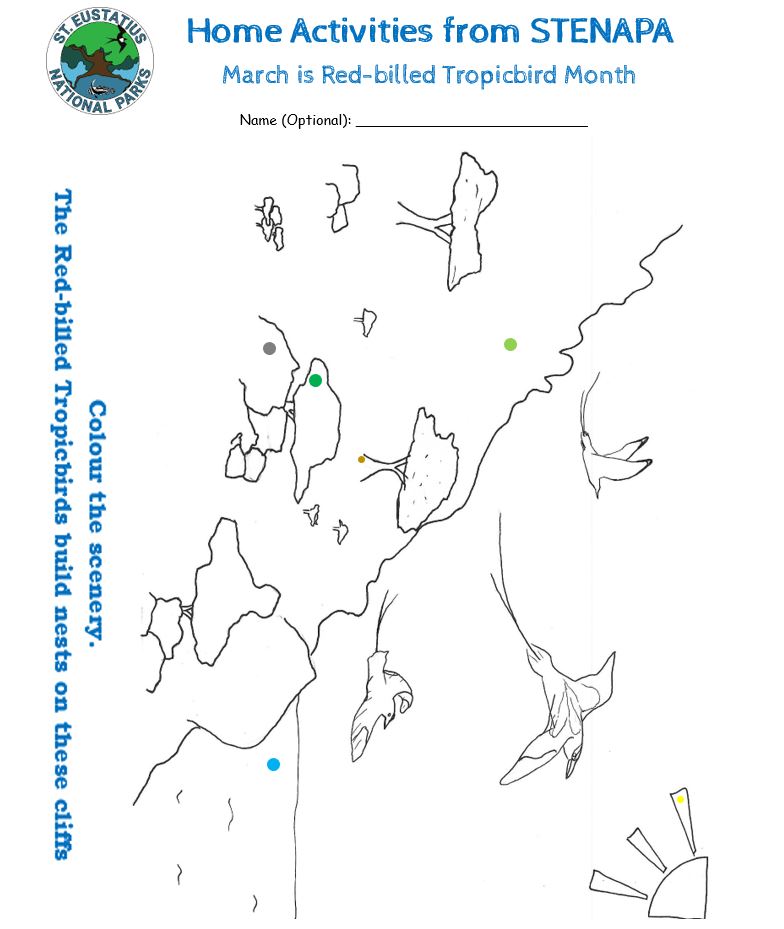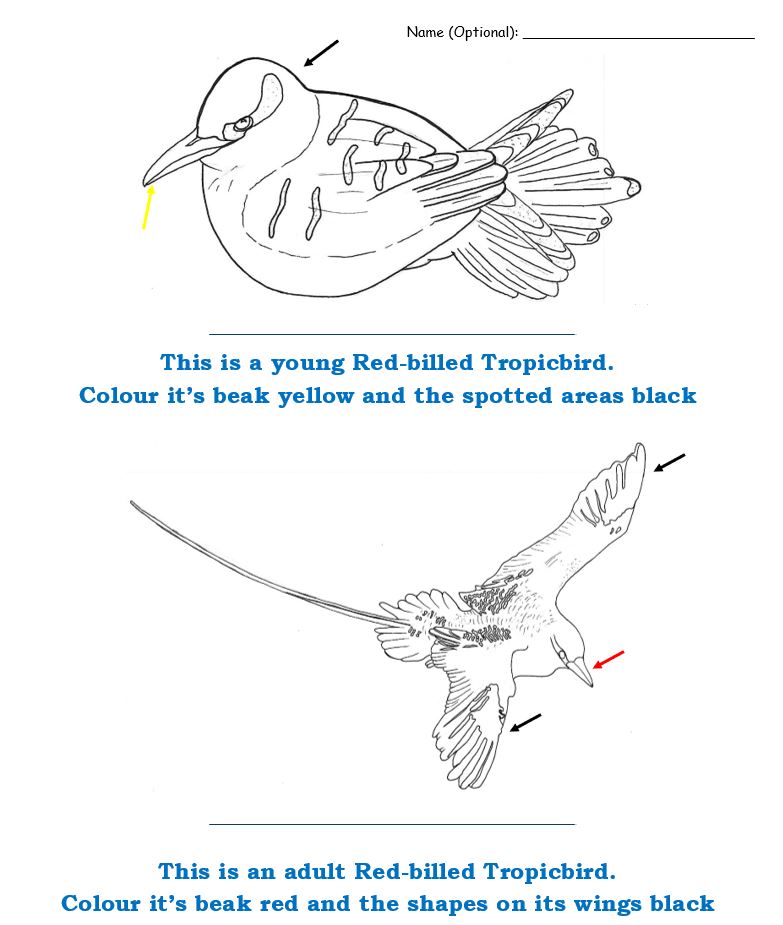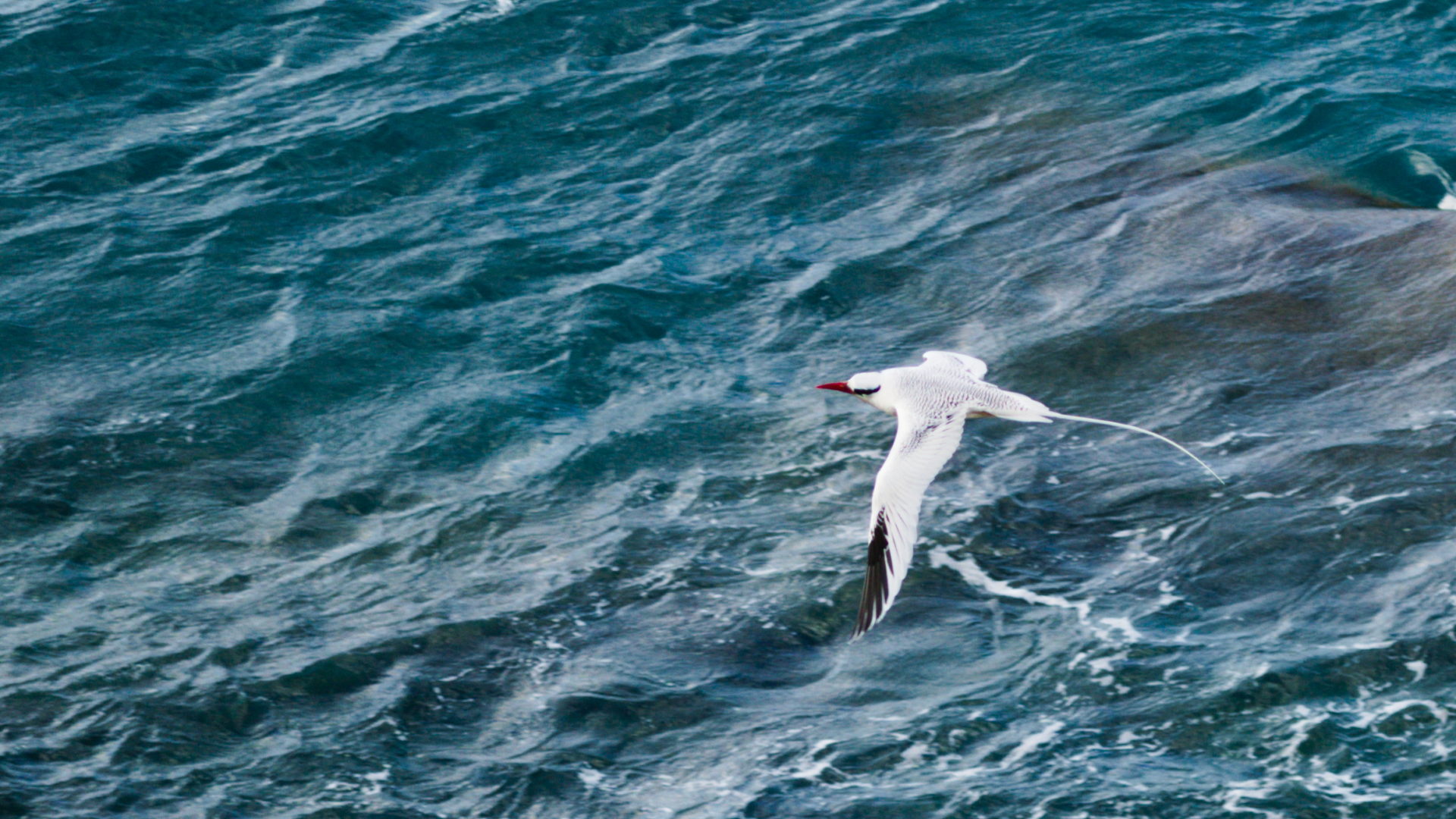
There are several sea-birds that visit St Eustatius, but the red-billed tropic bird, Phaethon aethereus, is the only one that nests on the island. Most of their nesting sites are currently located outside of the named Important Bird Areas (IBA) – The Quill and most of the Boven Northern Hills. Efforts are being made to extend the IBA.
“Nesting takes place in loose colonies, as they nest on a scrape found on a cliff face that is easy to take off from. A single egg is laid and is incubated by both sexes for about six weeks. Whether the egg hatches or not can be influenced by pollution and weather, although the last has a minimal effect on whether a chick fledges or not. After a chick fledges, the parents will usually stop visiting the nest and the chick will leave. Birds of all ages feed on fish and squid, catching them by diving from the air into the water. In some areas, introduced black and brown rats raid nests for eggs and young. Cats also threaten the red-billed tropic bird.” ~source. The IUCN ranks them as Least Concern (LC) but their population is decreasing. IF this continues, their ranking may change.
STATUS
The Red-billed Tropicbird is classified as Least Concern (LC) on the IUCN Red List.
DESCRIPTION
Adults are predominantly white with black barred back, a slender build and are approximately 46-51cm long. The central tail feathers double the total length and wingspans can reach up to and over one meter . The long wings have black markings on the flight feathers and their appearance is characterized by black through the eye and blood red bills. There is no significant difference between sexes, although recent research suggests males average longer bills. Juveniles are lightly barred back with darker black band across hind-neck and yellow bill and also, lack the presence of tail streamers.
HABITAT
These magnificent seabirds are mostly pelagic and sometimes spend up to four years at sea, flying continuously before returning to nest on the island from which they emerged as fledglings.
BIOLOGY
They feed mostly on small fish, especially flying fish, but will also take squid. Most prey is caught by plunge-diving but flying fish are sometimes taken in flight. It is nesting on small, secluded oceanic islands, in holes in cliffs or beneath rocks where take off is easy. . Breeding is seasonal in places but can be more or less continuous in others. In the Caribbean breeding occurs almost year-round. No regular migration is undertaken, although individuals can undergo extensive dispersal out to sea.
CONSERVATION AND MONITORING
The population, as with most seabirds, is suspected to be in decline owing to predation by invasive species. Stenapa is conducting long-term monitoring on both St. Eustatius and Saba in order to evaluate the effect of rats and cats on these regionally important populations.
CNSI’s bird expert and Terrestrial Biologist, Hannah Madden and STENAPA’s Education and Outreach Officer Achsah Mitchell share news about St. Eustatius’s nesting population of Red-billed Tropic Birds on Tourism FYI Radio Show. Watch on Facebook HERE.
Where do Red-billed Tropic birds migrate to between breeding seasons?



Annual Movement Patterns of Red-billed Tropicbirds
Draft Report July 2014 Patrick G.R. Jodice, Hannah Madden
Due to the necessary precautions taken across the globe, we have decided to add an education activity for the young ones. Print and share beneath the related Facebook post. Follow us on our Facebook Page for more activities.
Download these colouring pages HERE.


Thank you Ton Winkelman and Johan Coops from Winkelman en Van Hessen and a big thank you to the Dutch nature funds for assisting STENAPA with the Nature Awareness Campaign.
Donate to STENAPA and help us protect the Red-billed Tropic Bird and other Nature on Statia.
Type your donation amount below




